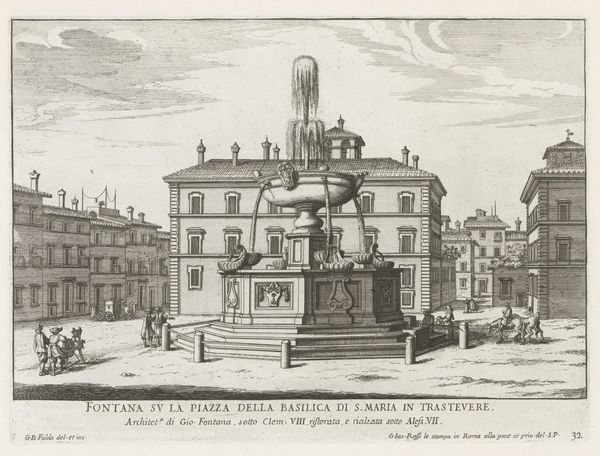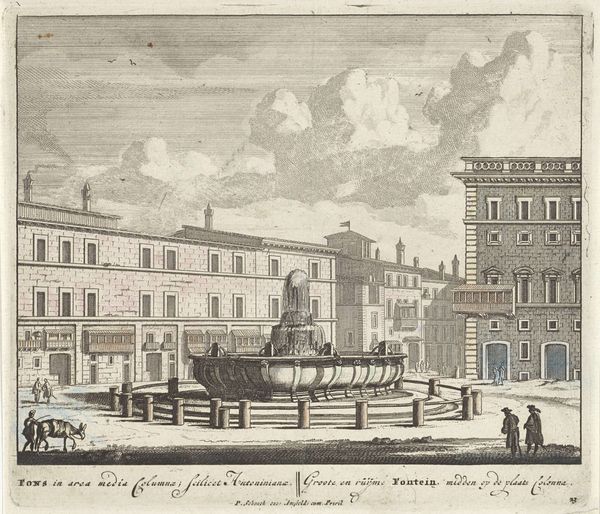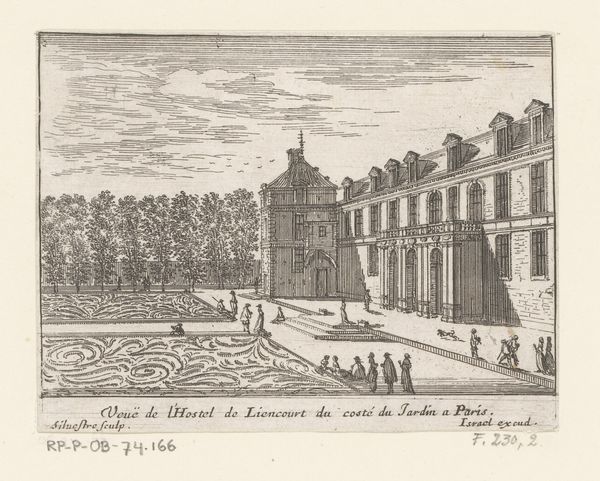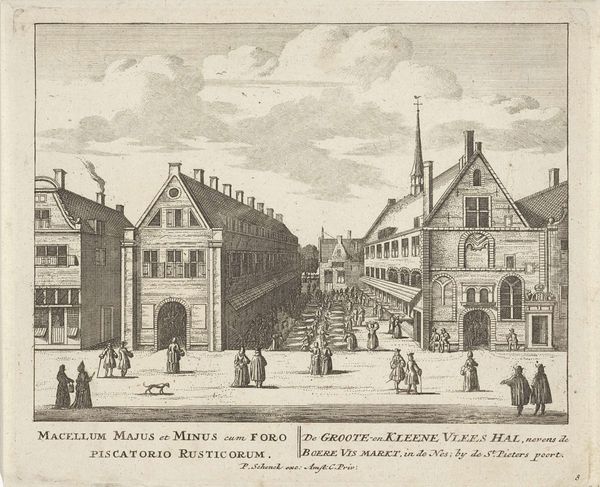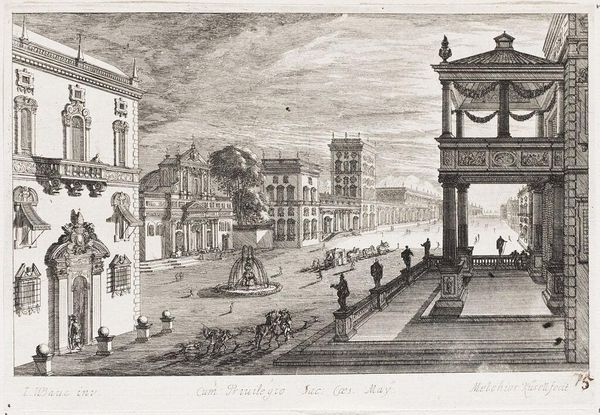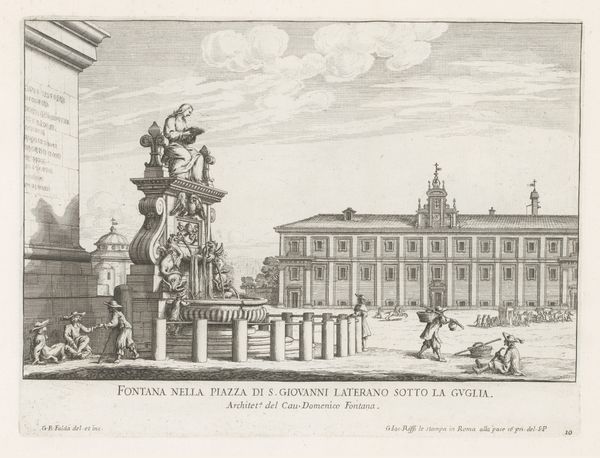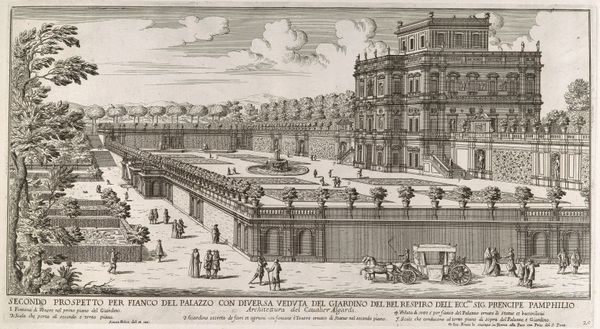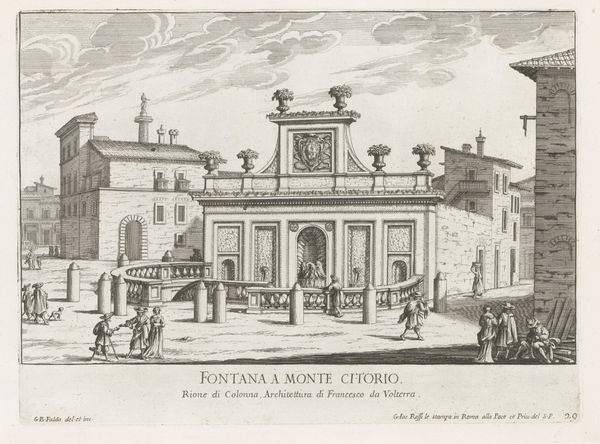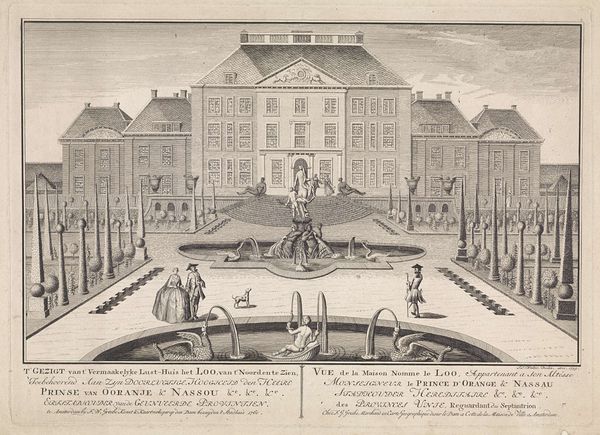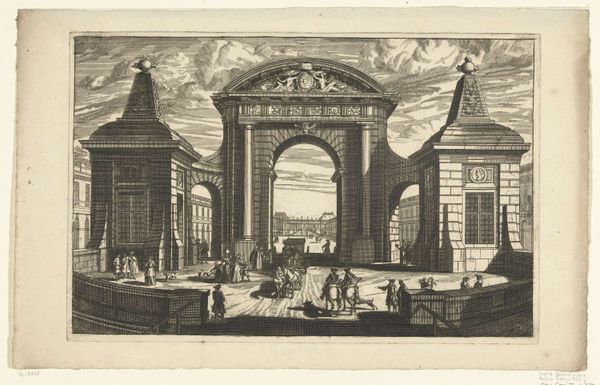
Fontein in de Cortile del Belvedere in het Vaticaan 1653 - 1691
0:00
0:00
print, engraving, architecture
#
baroque
# print
#
cityscape
#
engraving
#
architecture
Dimensions: height 212 mm, width 287 mm
Copyright: Rijks Museum: Open Domain
Curator: Let’s consider this captivating engraving from the Rijksmuseum's collection: "Fountain in the Cortile del Belvedere in the Vatican," dating back to between 1653 and 1691, by Giovanni Battista Falda. The composition pulls you right into the heart of the Vatican. What do you think, initially? Editor: Monumental! It almost feels staged. The perspective and sheer scale of the fountain against the building create this feeling of imposed grandeur. The precision in rendering all architectural detail gives the fountain a theatrical quality. Curator: Absolutely. Falda was a master at capturing architectural spaces, documenting Rome during the Baroque period. What's really important here is to view this work as documentation of power; it reveals not only aesthetic sensibilities, but also the values held by powerful institutions such as the Church at the time. This fountain was at the heart of papal power. Editor: Precisely, it invites analysis on the visual construction of power. The fountain isn't merely decorative. Its centrality within the Vatican complex suggests it acted as a focal point, visually enforcing and embodying the Vatican's influence. It would be fascinating to understand how people from different social strata perceived such displays of power. Curator: It is! The strategic placement within the Cortile emphasizes a sense of exclusivity. The courtyard itself was a carefully controlled space. How access was granted – or denied – communicated a great deal about status and belonging within this societal structure. Editor: Exactly. One must also ponder what such overwhelming artistic gestures signified to those marginalized, such as Rome’s impoverished and disenfranchised. It really emphasizes questions around whose history we are preserving when we celebrate such images. Curator: It prompts consideration of what aspects of history receive prominence within cultural memory institutions, and why certain architectural achievements become enduring symbols of cultural heritage, rather than looking at less triumphal stories. Editor: Definitely. Falda's work serves as a beautiful reminder of art’s connection with wider social structures, while challenging our perspective in what should be documented and revered. Curator: A stunning interplay between history, art, and enduring critical inquiry! Editor: Perfectly summarized, indeed. A space where politics and aesthetics elegantly coalesce to inspire modern critique.
Comments
No comments
Be the first to comment and join the conversation on the ultimate creative platform.
